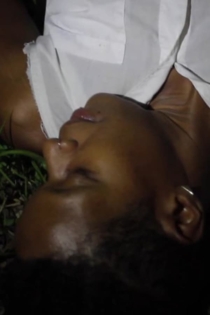
Beatriz Santiago Muñoz
2021Cinetracts '20
Želimir Žilnik, Sheilah ReStack
A global portrait documenting the year's events, Cinetracts '20 features the work of an international lineup of 20 filmmakers. Capturing the zeitgeist in their own backyard, the artists' short films are the culmination of a year-long residency project.
Cinetracts '20

Inventario
Beatriz Santiago Muñoz
The town of Frontera Corozal was created in the 70s as a modernization and urbanization project in Mexico. 601 Ch'ol families were relocated to identical plots of land by the Usumacinta River bordering Chiapas. I asked the citizens of the town to physically draw in space the contours of an imagined natural landscape or of their own constructed space. I worked with the community council (18 comuneros, all men) to make an inventory of all that exists within the town. The inventory was then narrated by a town council member through the makeshift speaker system that serves as the town’s preferred method of public communication. This project was commissioned for Esbozo para una Ciudad del Futuro, a site specific curatorial project by Laboratorio 060.
Inventario

Post-Military Cinema
Beatriz Santiago Muñoz
A beekeeper manages the bees that are part of the soundtrack. The afternoon light streams into the theater for 45 minutes to an hour every day and projects images of the forest that has grown in the 10 years since the closing of the base.
Post-Military Cinema
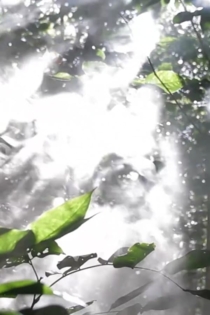
Nocturne
Beatriz Santiago Muñoz
Nocturne was shot over 10 days (mostly at night), while thinking about material and poetic transformation—in dreams, in darkness, through objects or ideas—in Port-au-Prince, Haiti. During this time I was hosted by the Quatre Chemins Festival, whose collaborators became an important part of the project. Daphne Menard, appears in Nocturne singing a traditional Haitian song about a young man who goes off to buy coffee and is arrested by police. Guy Regis Junior's mother, an assiduous lottery player, describes her lottery dreams and the common system for deciphering their codes. Two young theater students, from ENARTS, Port-au-Prince's art school, rehearse a speech, written for the occasion.
Nocturne
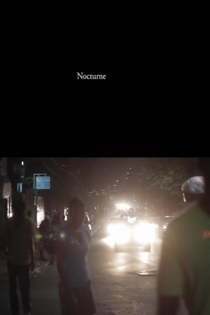
La Cueva Negra
Beatriz Santiago Muñoz
La Cueva Negra is a moving image project and photo series which explores the Paso del Indio site as a layered repository of symbolic and material histories. The site is well known in the archaeological community. Twenty years ago, during the construction of a multi-lane highway, a complex (possibly Archaic, definitely Pre-Taíno and Taíno) indigenous burial site was discovered and many objects and remains recovered. But the site was paved over for the construction of the expressway.
La Cueva Negra
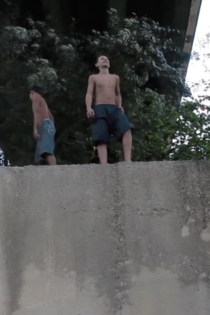
Otros Usos
Beatriz Santiago Muñoz
Shot from the old fuel dock, a mile-and-a-half-long structure once used to service battleships and now used by fishermen as a new short at the decommissioned US Naval Base of Roosevelt Roads in Ceiba, Puerto Rico. The view from the dock is, on one side, the Island of Vieques, and on the other; Vieques Sound--a passage that connects the Caribbean Sea with the Atlantic Ocean. The film is shot through a mirrored object, a formal experiment in order to transform and collapse the monumentality of the view, taking cues from shore fisherman who transform the base's use and meaning.
Otros Usos

Marché Salomon
Beatriz Santiago Muñoz
Two young workers at a busy Port-au-Prince open air market have a conversation about the mystical properties of common objects and whether the divine can inhabit any kind of object—mass produced bottles, toxic rivers, beheaded goats.
Marché Salomon

Oneiromancer
Beatriz Santiago Muñoz
Oneiromancer is the first of a series of works on the sensorial unconscious of the Puerto Rican anti-colonial movement. It centers on the figures, places, materials, and leftover materials of the members of the Fuerzas Armadas de Liberacion Nacional, a clandestine group, who were arrested and sentenced to near-lifetime prison terms for seditious conspiracy, a political crime.
Oneiromancer

Farmacopea
Beatriz Santiago Muñoz
Farmacopeas are catalogs of plants and their uses. Farmacopea is a film on the relationship between historical processes and the natural landscape of Puerto Rico. Hippomane mancinella, the little apple of death, is one of the most toxic plants in the world. Just sitting beneath it for an afternoon can make you sick for days. If the tree is burned, its smoke can be dangerous and cause permanent blindness. Though it was an important part of the native farmacopea, most Manchineel trees were erradicated. The landscape of the Caribbean has been thoroughly transformed: physically, through introduced species, agriculture and development but also through its visual representation as an undifferentiated tropical place for tourism, service and folklore.
Farmacopea
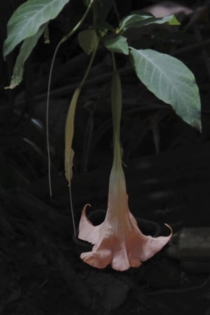
Ojos para mis enemigos
Beatriz Santiago Muñoz
Set in a former US Navy base in Puerto Rico, Ojos para mis enemigos (Eyes for my enemies) observes how multiple introduced and indigenous species—plants and crops, but also animals, humans and not—share this terrain and together constitute a new space, offering poetic as well as very concrete scenarios of the anthropocene, its devastation but also modes of recuperation.
Ojos para mis enemigos

